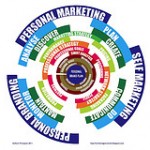 (and what we can do about it!)
(and what we can do about it!)
In other words – “am I bothered?” Hello everyone. This time I continue my look at understanding procrastination. I focus on just what does go on inside our heads and stop us from actioning things and what practical steps we can take to overcome this.
Procrastination may not be all our fault as there are plenty of people, places and things that hinder us from starting or stopping a task as discussed in my previous post. So that’s the good news because you can usually cope with those real obstacles. The bad news is, it is us and only us who are responsible for taking or not taking action. To beat procrastination, writes guru Michelle Tullier, you have to own up to the fact that what goes on in your head has something to do with the problem.
The Psychology of Action
All actions result from feelings and thoughts. If those thoughts and feelings are:
- Negative
- Irrational
- Unrealistic
… then the behaviour they spark may be procrastinating behaviour. If on the other hand our thoughts are neutral or positive the behaviour that results is more likely to be productive and appropriate.
Thinking too much? Bad habits?
Have you ever thought “I am thinking too much about this”? Worrying about something you are going to do, what could go wrong, what’s wrong with your situation etc. You end up making the task much more difficult or overwhelming than it needs to be. This can lead to you feeling fed up at the same time as beating yourself up for not getting things done! These feelings lead to lower self esteem and more procrastination. Here, follow the advice of the Nike slogan: Just do it!
The next time you are about to put something off that you regularly procrastinate over, listen to the thoughts in your head “I’ll do it later” or “I don’t have to do this now” If so, think about those simple little statements, known as negative self talk, think of the power they have had over your behaviour. Listen to Nike! Just do it!
Eight causes of Procrastination:
What’s yours and what can you do?
- Fear of failure, success or how you’ll be judged. A handy defence mechanism writes Tullier. It keeps us from trying new things, taking risks or accepting new challenges. By not giving ourselves the chance to fail we can’t then be disappointed or rejected. Fear of success is about how our lives may change if we do succeed. What might be expected of you? Whereas fear of being judged is more about concern about your performance so you delay starting or not finishing a task. TIP Remember a time when you have actually failed at something and that you survived; that your boss or colleagues or people that care about you were supportive and didn’t think any less of you.
- Perfectionism. This is one of the most common causes of procrastination. Striving for excellence is a good thing. Striving to be perfect is not. What’s the difference asks Tullier? Perfectionists can be extreme and obsessive in their thinking; they procrastinate because of burnout, remembering how it felt last time when they worked on something similar. So to protect themselves they only get started when forced to, when they have the time or no choice. High standards allow behaviour to be realistic and flexible. TIP Perfectionism is an impossible task and that aiming for 80% is still acceptable.
- Being overwhelmed. Finding a task so difficult or big you don’t know where to start. If the size, scope or nature of the activity is overwhelming it is easier to put it off. TIP Break the project into steps, have a plan and review regularly to keep perspective and feel a sense of progress.
- Feeling frustrated. Do you have a low tolerance for ambiguity or delayed gratification that comes with some projects? This is similar to overwhelm if you are the sort of person who needs to see instant results and you are working on a long term goal like weight loss. TIP Work with some support. Team up with a buddy to motivate each other.
- Adrenaline rush addiction. Are you relying on the thrill that stems from completing a task at the last minute? Think about why you feel the excitement? Is it because life is dull? Or do you believe you work at your best in this way? Maybe you do do good work but what is it like for others around you? What are you like to be with or live with? What long term implications are there for your health and heart? Working late nights, all night, no breaks actually makes you tired, grumpy, unproductive and liable to make mistakes as there is no time for reflection or redrafts. TIP Give yourself the challenge of finishing the project early and treat yourself to a reward!
- Negativity towards the task. This refers to disliking or being uninterested in the activity itself. Have you got evidence of half finished jobs at work or home? These may seem trivial but may form a daily reminder of failure, unfinished business, clutter, if only I had the time thoughts which continue to drain you. TIP Pay someone to complete, or delegate, or ask for help with a reward at the end or simply dump it. Motivate yourself by viewing the big picture, how this fits in and how you will feel when you have done the task. Make it fun with friends, music, whatever it takes.
- Rebellion. You want me to do what? Procrastination is a powerful tool for rebellion. We can demonstrate our feelings about people and tasks by not doing what is requested. In this way we have control. TIP A little rebellion is necessary for our sanity and independence says Tullier. But if carried too far can put our jobs, businesses and relationships in jeopardy. Discuss your feelings and thoughts to come up with a compromise.
- Psychological issues. Conditions such as depression, obsessive-compulsive disorder and anxiety make it difficult to get things done. TIP ask for help and support from professional medical resources. Cognitive Behavioural Therapy (CBT) is one of the helpful strategies to find out about!
If the idea of having to resolve the internal drivers of your procrastination makes you want to give up, be reassured generally the internal causes are no more difficult to overcome than external obstacles. I talked about this in my last post.
Take some time to identify your top cause and be brave and do something about it. Tweet



 Customers are demanding more; they want the promise of value that you offer.
Customers are demanding more; they want the promise of value that you offer. It is a busy time of year so I decided to write a brief post and send my best wishes for a peaceful, healthy and prosperous New Year!
It is a busy time of year so I decided to write a brief post and send my best wishes for a peaceful, healthy and prosperous New Year! The phrase ‘hurry sickness‘ is now in common use.
The phrase ‘hurry sickness‘ is now in common use.
 Finding more time in the day and getting organised are some of the key issues for many of our clients. This post builds on
Finding more time in the day and getting organised are some of the key issues for many of our clients. This post builds on 

